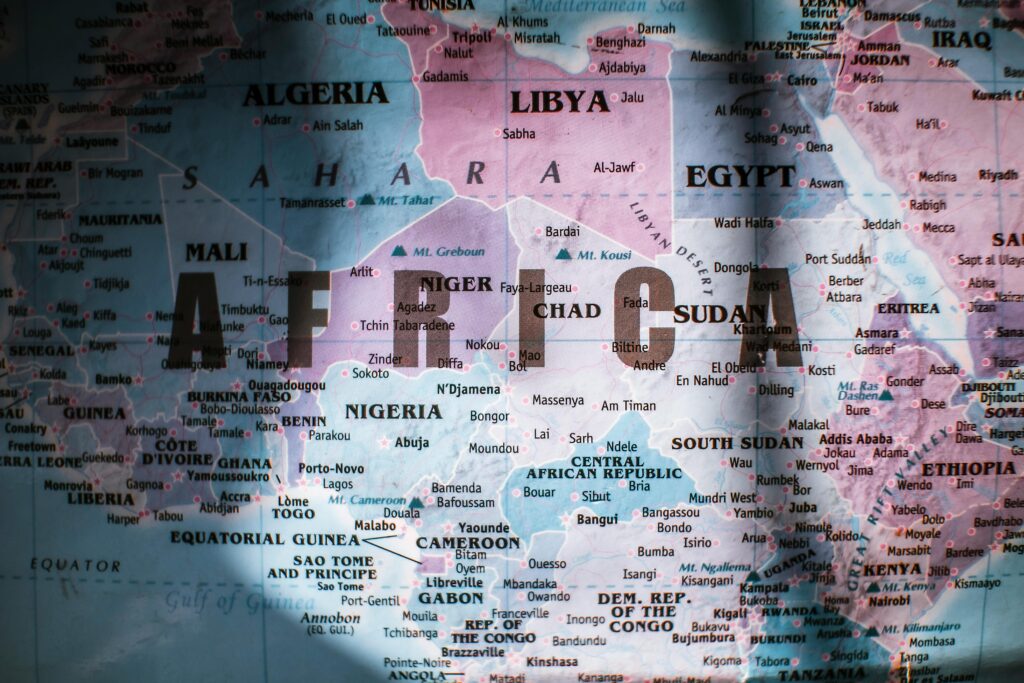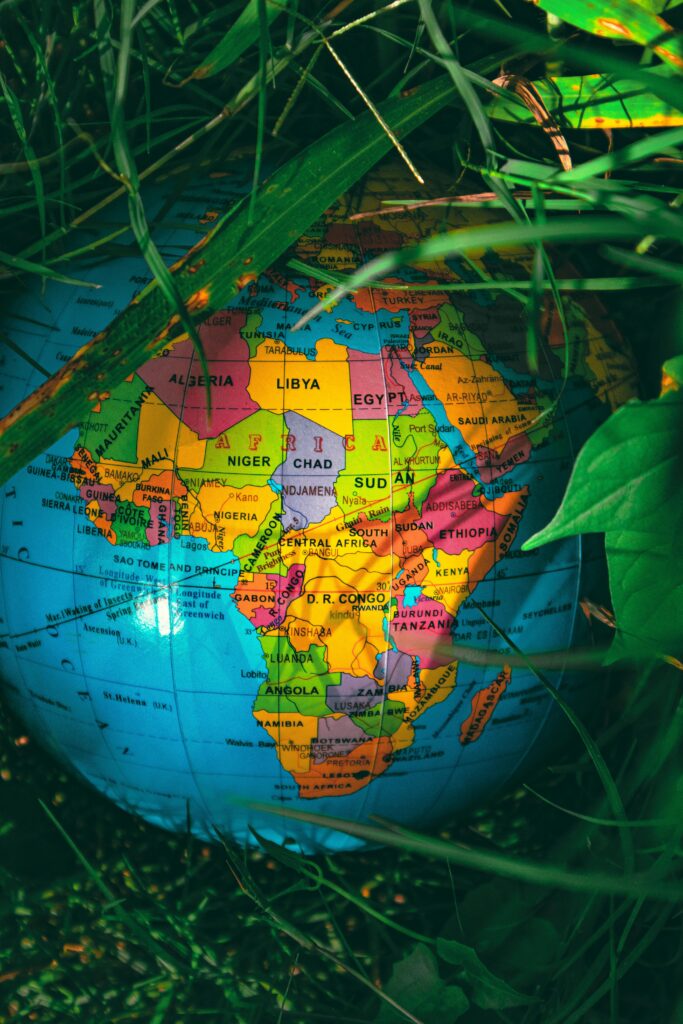
Introduction
Remittances play a crucial role in Sub-Saharan Africa’s economy, serving as a vital source of income for millions of households. The region receives billions of dollars annually from its diaspora, with key sender countries including the U.S., Europe, and the Middle East. These funds support essential needs such as education, healthcare, and business investments. However, remittance costs in the region remain among the highest globally, averaging around 7–8% per transaction.
This means sending money to sub-Saharan Africa costs the sender an average of 8.37% of the total value of the transaction, as of Q2 2024, according to the World Bank, compared to 5.53% in South Asia. While the average cost of sending money to sub-Saharan Africa is the highest globally, the cost of digital remittances to the region is less than the global average. Countries like Nigeria, Ghana, and Kenya are among the top recipients of remittances in the region.
Sub-Saharan Africa refers to the region of the African continent that lies south of the Sahara Desert. It consists of 46 countries and is known for its diverse cultures, languages, and ecosystems. These include Central Africa, East Africa, Southern Africa, and West Africa. The region is rich in natural resources, including minerals, oil, and fertile land, but faces challenges such as poverty, political instability, and climate change. Economically, it is experiencing growth driven by agriculture, technology, and natural resource exports. Despite developmental hurdles, Sub-Saharan Africa is home to vibrant cultures, innovative entrepreneurs, and a young, rapidly growing population that holds significant potential for the future.
The potential benefits are huge; the less it costs to send money to Africa, the more money is likely to be sent. An increased flow of foreign currency can act as a lifeline for both individuals and national economies. For example according to the World Bank remittances worth $54 billion sent to sub-Saharan Africa in 2023, accounted for more than a fifth of the GDP of Gambia, Lesotho, and Comoros and more than a tenth of Liberia, Cape Verde, and Guinea-Bissau. Remittances are more valuable to Kenya than its key exports.
In this article, we will explore the challenges of sending money to this region and provide actionable tips on how to reduce your expenses.
Understanding the Challenges
The average transaction fee for sending money to sub-Saharan Africa is about 7.4%, significantly higher than other regions. This is partly due to regulatory challenges, as payment companies cannot use a single license across multiple countries, leading to increased operational costs. Additionally, the lack of a unified payment system in Africa means that each country has its own set of rules and fees, further complicating the process.
Why Sending Money to Sub-Saharan Africa is Expensive
1. High Transaction Fees
- Traditional money transfer operators (MTOs) like Western Union and MoneyGram charge hefty service fees compared to other regions.
- Banks add extra processing charges, including intermediary fees and receiving bank costs.
- Some services have hidden fees that increase the total cost of each transaction.
2. Unfavorable Exchange Rates
- Many providers add a markup to currency exchange rates instead of offering the market rate.
- Even when a service claims to have low fees, poor exchange rates can significantly reduce the amount the recipient gets.
- Some companies do not disclose exchange rate details, making it difficult to compare true costs.
3. Limited Banking Infrastructure
- Many people in Sub-Saharan Africa remain unbanked, relying on informal and often costly transfer services.
- Rural areas have limited banking options, forcing recipients to use expensive intermediaries.
- Cash-based economies create barriers to digital banking solutions, leading to higher costs.
4. Regulatory Challenges
- Cross-border money transfers are subject to strict anti-money laundering (AML) and Know Your Customer (KYC) regulations.
- Compliance costs are passed on to customers, making transfers more expensive.
- Some African countries impose currency controls that complicate international money transfers.
5. Low Competition in Certain Markets
- A few dominant providers in certain countries keep fees high due to lack of competition.
- Exclusive partnerships between mobile money providers and transfer services limit customer choices.
- Slow adoption of fintech solutions in some areas prevents the disruption of high-cost traditional services.

Strategies to Reduce Costs
1. Choose Low-Fee Services
These providers offer transparent pricing and better exchange rates, making them cost-effective options.
Selecting the right service provider is crucial in minimizing costs. Here are some of the best options:
- Wise: Known for its transparent and competitive fees, Wise offers low-cost transfers with fees as low as 0.1% for large transfers. It uses the mid-market exchange rate, ensuring no hidden markups. This transparency makes it easier to predict exactly how much your recipient will receive.
- WorldRemit: Offers low-cost bank transfers to several African countries, making it a preferred choice for destinations like Nigeria. WorldRemit also provides a variety of payment options, including cash pickup and mobile money, which can be convenient for recipients without bank accounts.
- Remitly: Frequently the cheapest option for countries such as Ghana and Zambia, with fees ranging from 0.25% to 2%. Remitly also offers fast transfers, often within minutes, which can be crucial in emergencies.
- Yogupay: Our remittance API offers low-cost domestic payouts in multiple countries in Africa and Latin America. We enable you to pre-fund your payout wallets in any of the currencies we support
2. Optimize Transfer Methods
The method you choose for transferring money can also impact costs:
- Bank Transfers: These are generally cheaper than using debit or credit cards. Bank transfers may take longer but offer better value. They are especially cost-effective for larger transfers.
- PAPSS (Pan-African Payment and Settlement System): This system allows for instant and affordable intra-African transfers in local currencies, reducing the need for currency conversion and associated fees. PAPSS is a game-changer for intra-regional transfers, making it easier and cheaper to send money within Africa.
- Yogupay: YoguPay for International Money Transfer Operators (IMTOs) is a tailor-made FX and last-mile termination solution for IMTOs. Through YoguPay’s robust payout infrastructure and our bulk payout infrastructure, we enable you to conveniently execute multiple international payments involving multiple currencies and jurisdictions at a click of a button.
3. Avoid Hidden Charges
Some providers hide fees in exchange rate markups. Opt for services like Wise that use the mid-market exchange rate to avoid these hidden charges. This ensures that you are not losing money to inflated exchange rates.
4. Leverage Discounts
Many services offer discounts for larger transfers. For example, Wise provides lower fees for bulk transfers. If you need to send a significant amount, look for providers that offer such discounts.

5. Compare Providers
Use comparison tools like Monito to find the best deals for your specific transfer needs. This helps in identifying the cheapest provider for your destination. Monito provides real-time data on fees and exchange rates, allowing you to make informed decisions
- Use online platforms like Monito, RemitFinder, and FXcompared to compare fees and exchange rates.
- Look beyond just the transfer fee—consider the exchange rate markup as well.
- Check for service updates, as rates and fees change frequently.
8. Use Cryptocurrency or Blockchain-Based Transfers
- Services like BitPesa (now AZA Finance) and Binance Pay allow low-cost cross-border transactions.
- While crypto transfers can be cheaper, the recipient needs access to exchanges or digital wallets to convert funds.
9. Avoid Bank Transfers When Possible
- Banks tend to charge more than specialized remittance services due to intermediary costs.
- Instead, use mobile wallets (e.g., M-Pesa, Airtel Money, Orange Money) or fintech apps that directly link to mobile banking.
10. Send Larger, Less Frequent Transfers
- Many services charge a flat fee per transaction, so sending larger amounts less frequently reduces the overall cost.
- This strategy helps minimize fees and ensures recipients receive more money in total.
11. Leverage Mobile Money Services
- Mobile wallets are widespread in Africa and often have lower fees than traditional banking options.
- Platforms like M-Pesa (Kenya, Tanzania), MTN Mobile Money (West Africa), and EcoCash (Zimbabwe) enable direct transactions with minimal costs.
12. Take Advantage of Promotions
- Some companies offer first-time user discounts, referral bonuses, or seasonal promotions that reduce transfer costs.
- Frequent senders can benefit from loyalty programs that lower fees over time.
Conclusion
Transferring money to Sub-Saharan Africa can be expensive, but with the right strategies, you can reduce costs significantly. By comparing services, using digital platforms, and leveraging mobile money solutions, you can ensure that more of your hard-earned money reaches your intended recipient. Before sending any funds, take time to explore the most cost-effective options to maximize the value of your remittance, choosing low-fee services, optimizing transfer methods, avoiding hidden charges, leveraging discounts, and comparing providers, you can significantly reduce the costs associated with international money transfers. This ensures that more of your money reaches your loved ones, making a bigger impact in their lives.
Whether you’re sending money for personal reasons or for business, these strategies will help you navigate the complex landscape of international remittances efficiently. As the region continues to develop its financial infrastructure, options like PAPSS will become increasingly important for reducing costs and improving accessibility.
In the meantime, staying informed and using the right tools will be your best allies in minimizing expenses and maximizing the value of your transfers.